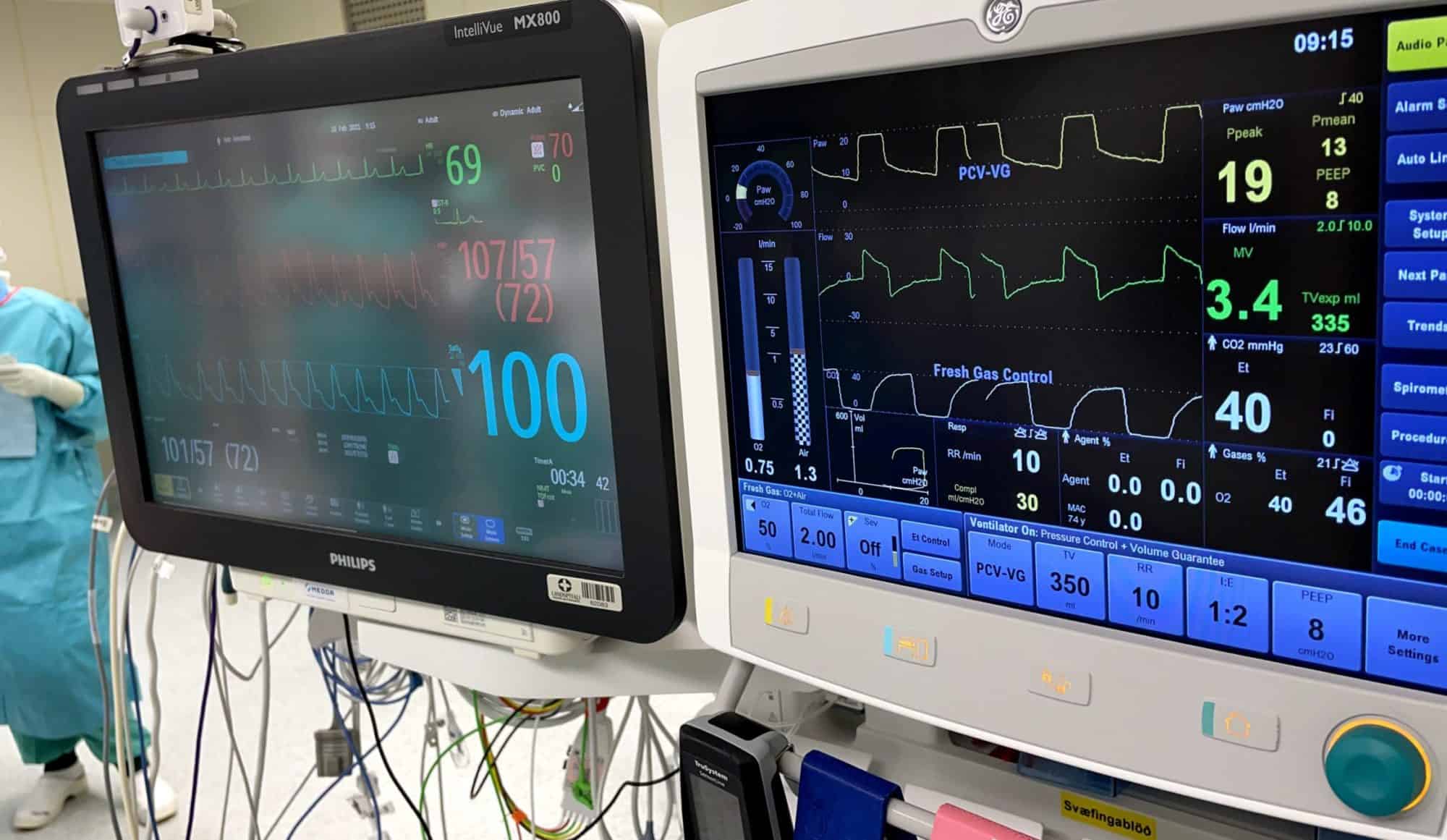Airway Management – Core Learning Outcomes
* Able to predict difficulty with an airway at preoperative assessment and obtain appropriate help – Able to maintain an airway and provide definitive airway management as part of emergency resuscitation – Demonstrates the safe management of the can’t intubate can’t ventilate scenario – Maintains anaesthesia in a spontaneously breathing patient via a facemask for a short surgical procedure [less than 30 mins]
Knowledge
- AM_BK_01 Explains the methods commonly used for assessing the airway to predict difficulty with tracheal intubation
- AM_BK_02 Describes the effect of pre-oxygenation and knows the correct technique for its use
- AM_BK_03 Describes the principles of management of the airway including techniques to keep the airway open and the use of facemasks, oral and nasopharyngeal airways and laryngeal mask airways
- AM_BK_04 Explains the technique of inhalational induction and describes the advantages and disadvantages of the technique.
- AM_BK_05 Knows the factors influencing the choice between agents for inhalational induction of anaesthesia
- AM_BK_06 In respect of tracheal intubation:
- * Lists its indications
- * Lists the available types of tracheal tube and identifies their applications
- * Explains how to choose the correct size and length of tracheal tube
- * Explains the advantages/disadvantages of different types the laryngoscopes and blades including, but not exclusively, the Macintosh and McCoy
- * Outlines how to confirm correct placement of a tracheal tube and knows how to identify the complications of intubation including endobronchial and oesophageal intubation
- * Discusses the methods available to manage difficult intubation and failed intubation
- * Explains how to identify patients who are at increased risk of regurgitation and pulmonary aspiration and knows the measures that minimise the risk
- * Understands the airway management in a patient with acute illness who is at risk of gastric reflux
- * Categorises the signs of pulmonary aspiration and the methods for its emergency management
- AM_BK_07 In respect of restoring spontaneous respiration and maintaining the airway at the end of surgery:
- * Explains how to remove the tracheal tube and describes the associated problems and complications
- * Recalls/describes how to manage laryngospasm at extubation
- * Recalls/lists the reasons why the patient may not breathe adequately at the end of surgery
- * Recalls/identifies how to distinguish between the possible causes of apnoea
- * Lists the possible causes of postoperative cyanosis
- * Understands how to evaluate neuro-muscular block with the nerve stimulator
- AM_BK_08 With respect to oxygen therapy:
- * Lists its indications
- * Knows the techniques for oxygen therapy and the performance characteristics of available devices
- * Describes the correct prescribing of oxygen
- * Recalls/explains the causes and management of stridor [Cross Ref; post-operative]
- AM_BK_09 Discusses the indications for RSI
- AM_BK_10 Describes the care of the airway in an unconscious patient in the recovery room, including safe positioning
- AM_BK_11 Lists advantages and disadvantages of different techniques for airway management during resuscitation, including but not limited to:
- * Oro and nasopharyngeal airways
- * Laryngeal Mask type supraglottic airways including but not limited to: LMA, Proseal, LMA supreme, iGel
- * Tracheal intubation
- AM_BK_12 Compares the methods by which ventilation can be maintained in a patient suffering a respiratory or cardiac arrest, using:
- * Mouth to mask
- * Self-inflating bag
- * Anaesthetic breathing system
- * Mechanical ventilator
- AM_BK_13 Discusses the different types of laryngoscope blades available in routine practice and the indications for their use
- AM_BK_14Outlines the advantages/disadvantages and reasons for development of new laryngoscopes [e.g. glidescope]
- AM_BK_15Outlines the indications for fibre-optic intubation and how awake intubation may be achieved
- AM_BK_16 Describes the management of the ‘can’t intubate, can’t ventilate’ scenario
- AM_BK_17 Describes the principles of, and indications for, the use of needle crycothyrotomy and manual jet ventilation
Skills
- AM_BS_01 Demonstrates satisfactory proficiency in performing a relevant clinical examination and assessment of the airway and dentition
- AM_BS_02 Identifies normal appearances and significant abnormalities in radiographs including:
- * Cervical spine, chest
- * Head CT and MRI showing clear abnormalities relevant to the airway
- AM_BS_03 Reliably predicts the level of supervision they will require
- AM_BS_04 Demonstrates effective pre-oxygenation, including correct use of the mask, head position and clear explanation to the patient
- AM_BS_05 In respect of airway management:
- * Demonstrates optimal patient position for airway management, including head tilt, chin lift, jaw thrust
- * Manages airway with mask and oral/nasopharyngeal airways
- * Demonstrates hand ventilation with bag and mask [including self- inflating bag]
- * Able to insert and confirm placement of a Laryngeal Mask Airway
- * Demonstrates correct head positioning, direct laryngoscopy and successful nasal/oral intubation techniques andconfirms correct tracheal tube placement
- * Demonstrates proper use of bougies
- * Demonstrates correct securing and protection of LMAs/tracheal tubes during movement, positioning and transfer
- * Correctly conducts RSI sequence
- * Correctly demonstrates the technique of cricoid pressure
- AM_BS_06 Demonstrates correct use of advanced airway techniques including but not limited to Proseal, LMA supreme, iGel
- AM_BS_07 In respect of inhalational induction of anaesthesia:
- * Satisfactorily communicates with the patient during induction
- * Satisfactorily conducts induction
- AM_BS_08 Demonstrates the ability to maintain anaesthesia with a face mask in the spontaneously breathing patient
- AM_BS_09 Demonstrates failed intubation drill
- AM_BS_10 Demonstrates management of ‘can’t intubate, can’t ventilate’ scenario
- AM_BS_11 Demonstrates correct use of oropharyngeal, laryngeal and tracheal suctioning
- AM_BS_12 Demonstrate appropriate management of tracheal extubation, including;
- * Assessment of return of protective reflexes
- * Assessment of adequacy of ventilation
- * Safe practice in the presence of a potentially full stomach
- AM_BS_13 Demonstrates how to turn a patient into the recovery position
- AM_BS_14 Demonstrates small and large bore needle cricothyrotomy and manual jet ventilation
- AM_BS_15Demonstrates surgical cricothyrotomy
